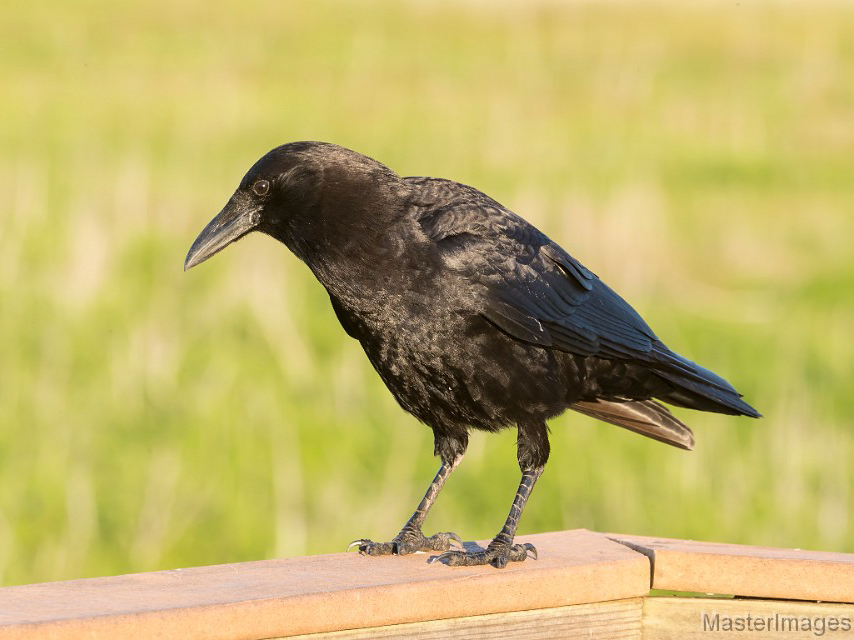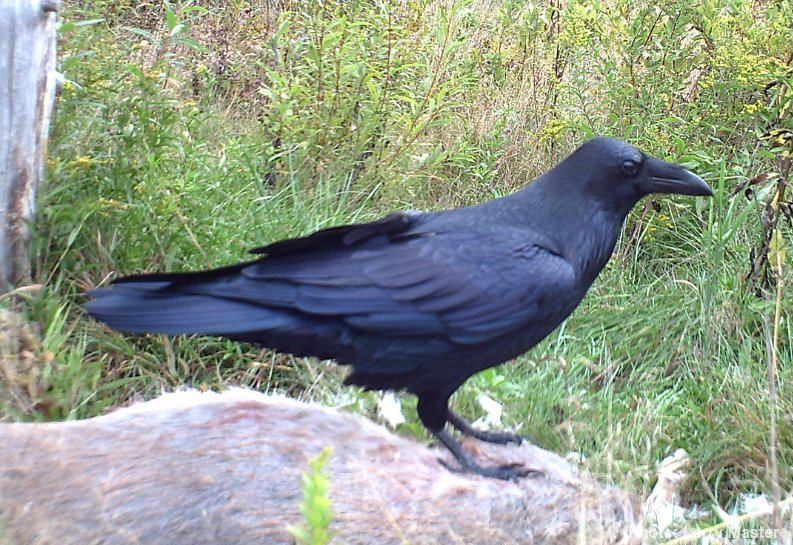
Birds in Black | About Crows and Ravens
Wednesday, February 12, 2020
By: Audrey Hyson - Guest Author
Reprinted with permission from the November-December 2019 "Adirondac," the magazine of the Adirondack Mountain Club, Inc., copyright 2019.
It is now winter and the forest has grown increasingly still and silent. The active, noisy family groups of crows who remain for the winter now become the stars of the show. One day, they will congregate in our driveway, eating beechnuts; the next they will move on to some other delicacy in another part of the neighborhood. They gather in trees and call to each other as I pass by. Then they disappear for weeks at a time and reappear unexpectedly.
Humans and members of the crow family of birds (the Corvidae) have lived in close proximity for thousands of years. The ambivalence with which crows are viewed is reflected in their roles in the mythologies of ancient civilizations. Sometimes they are revered as bearers of wisdom and insight, at others as harbingers of death.
In North America, the crow family comprises crows, ravens, magpies, jays, and nutcrackers. In eastern North America, crows and jays have adapted to anthropocentric settings and are very common in urban, suburban, and rural settings. Ravens are more wary and reside in wilder places where they can avoid contact with humans.
About Corvids
Corvids have a reputation for being extraordinarily intelligent. Their brain-to-body weight ratios are among the largest in birds, equal to that of most great apes and cetaceans and only slightly lower than humans. The young stay with the parents for an extended period, allowing the parents to teach them social and survival skills. They are omnivores with a highly varied diet, which allows them to adapt to changing circumstances.
The social behaviors of crows and ravens are complex. Members of groups are able to recognize individuals and track the social position of other members over time. They also can distinguish sex, age, reproductive status, and dominance, and constantly update this information. The social complexity may correspond to the high level of cognitive abilities. Studies have shown the abilities of ravens to hide foods and remember where the caches are over long periods of time.
 Crow
Crow
Crows are gregarious, living in family groups and also coalescing into large groups in search of food. In the winter, crows congregate into large (sometimes enormous) flocks to roost at night. In urban areas, this creates conflict with human residents who don’t appreciate the noise and mess that crows leave behind. Ravens, on the other hand, are solitary or forage in pairs and do not congregate to roost.
How to tell them apart
The common raven (Carvus corax) and American crow (Corvus brachyrhynchos) can be difficult to tell apart when they are seen flying or sitting in a tree at a distance. As a friend of mine pointed out, “if you see a large black bird flying and think it’s a raven, it’s probably a crow.”
Several physical characteristics and behaviors can help differentiate them. Ravens are considerably larger, the size of a red-tailed hawk, whereas crows are pigeon sized. In flight, the tail of a raven appears diamond-shaped, having longer feathers in the center and shorter ones at the sides. Crows have fan-shaped tails. Ravens both flap and glide, soaring on thermals like hawks, while crows appear to be more purposeful, following direct paths and flapping steadily with less gliding and soaring.
 Raven
Raven
The beak of the raven is larger and more powerful than the crow’s and there is a distinctive tuft of bristles at the base of the upper mandible. Ravens have shaggy feathers on the neck that accentuate the size and chunkier appearance of the head, beak, and neck, as opposed to the sleeker look of the crow.
How to differentiate their calls
If you hear but can’t see these birds, the nasal, high-pitched “caaw caaw” of the crow is easily differentiated from the low, guttural “crock, crock” of the raven. Ravens also make a variety of clicking sounds and other vocalizations to communicate with their mates or offspring.
What is a group of them called?
The descriptive names given to groups of crows—a “murder”—and ravens—a “conspiracy”—betray our long-held discomfort with these behaviorally complex and successful members of the avian family. As more is learned about their intelligence and ability to modify their behavior when needed, perhaps we will appreciate them more. Rather than carrying a sinister implication, their raucous presences in the winter landscape can be a focal point for joyful engagement and spark our curiosity.

Audrey Hyson, a long-time supporter of the Adirondack Council, blogs about the Adirondack big backyard from her base in Lake Placid. Audrey enjoys rambles around the woods and waters by ski, snowshoe, canoe, guideboat, foot or other human-powered means. She likes to go at a pace that allows birdwatching, wildflower identifying and lolly gagging as central to the activity.
Audrey has been pursuing her fascination for natural history since childhood and is always seeking to gain a better understanding of the wild outdoors.




